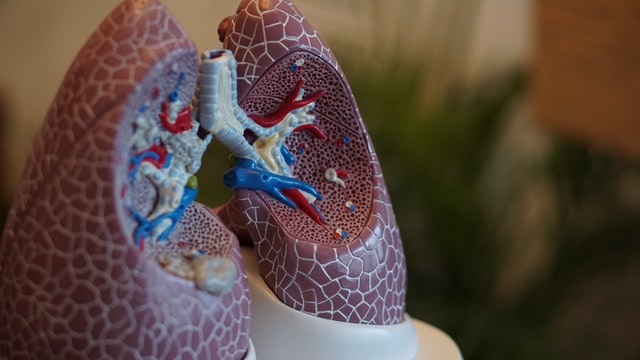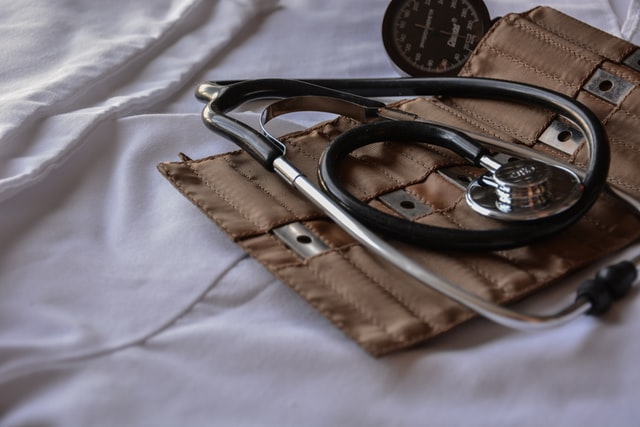Are you preparing to take the ATI TEAS? In this article, we’ve covered the TEAS science study guide. Read on for some useful tips and important information. Take note of these and make sure you understand them completely before taking the official ATI TEAS exam. Continue reading to find out how to pass the ATI TEAS Science section.
Beginning Of TEAS Science Study Guide: What Is The TEAS?
The ATI TEAS (also known as the Test of Essential Academic Skills) is an academic test that measures a student’s abilities in English and Language Usage, Mathematics, Science, and Reading. TEAS provides the College with an additional standardized assessment instrument for determining candidates’ competence levels for nursing-related education programs. Students applying to nursing, respiratory, or occupational therapy programs must take the ATI TEAS test. Candidates who intend to take this test must, in general, meet the fundamental biology education criteria.
ATI TEAS Science Review
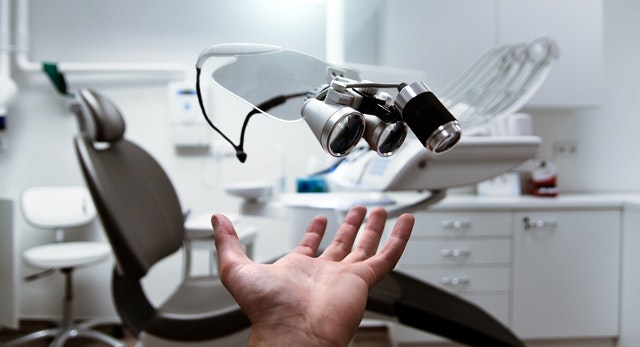
You’re probably well aware of the significance of science in the nursing sector, as well as the medical field as a whole. The industry is always changing as a result of various medical discoveries that can only be achieved through comprehensive and dedicated scientific research. Almost every task a nurse performs, from listening to a patient’s heartbeat to taking blood to injecting vaccines, includes science in some way. Without the help of science, none of these very common procedures you’ll be asked to execute on a daily basis would be possible. As you work in your chosen profession, you will be required to join the subject on a variety of levels. Many of the biological processes that take place in the human body, as well as the standards by which we’ve come to define what constitutes a healthy person, were discovered and are currently assessed scientifically. The TEAS test recognizes this, and each iteration tailors itself to the various forms and levels of scientific knowledge that every entry-level nursing student should be familiar with when they begin their studies.
We make it our aim on our website to provide you with all of the resources you’ll need to succeed on any exam, including the TEAS 6 Science. While the contents are new, we want to provide you with as much information as possible so that you may be as better prepared as possible. Keep reading to find out how the Science part of the TEAS 6 has evolved and how you may properly approach its topics.
The 47 questions on the ATI TEAS Science Test include three primary categories, with human anatomy and physiology receiving the most emphasis. The percentages of questions from each assessed field of science are as follows:
- Human Anatomy and Physiology: 68%
- Life and Physical Science: 17%
- Scientific Reasoning: 15%
The great majority of questions are about the human body, its systems, and its functioning. A few of the questions involve biology, chemistry, and physics. You’ll need to know about science topics as well as be able to reason about them using scientific ways of thought for some of the questions.
For practice questions, visit our homepage to take the free and full TEAS practice test pack with more than 500 questions for all TEAS subtests.
Below is the detailed information for each field. Let’s explore!
Human Anatomy And Physiology
The human body covers the majority of the Science part of the ATI TEAS Test. This ATI anatomy and physiology might include questions on the gastrointestinal system and human metabolism, as well as more complex topics like identifying the bodily system responsible for reproductive function, hormone output, or the body’s electrical impulses. The questions might cover a wide range of muscles and body functions, from the heart’s function and parts to those of the abdominal muscles. Study all areas of the body and its systems to prepare for these questions.
1. Cells: Parts and Function
All living things are made up of cells, which are the basic building blocks. A nucleus, cytoplasm, cell membrane, mitochondria, and ribosomes are found in all animal and plant cells. Plant cells, on the other hand, include three additional components: chloroplasts, a cell wall, and a permanent vacuole. Different types of cells are intended to fulfill specific tasks.
Make sure you grasp the following terms and how they affect cell function: nucleus, eukaryotic, organelles, plasma membrane, cytoplasm, ribosome, rough ER, mitochondria, Golgi apparatus, nucleolus, lysosome, centrosome, smooth ER, cilia.
2. Tissues
Tissues are groups of cells that work together to fulfill a certain task. The body’s tissues are divided into four categories: epithelial, connective, muscular, and nerve tissues. Epithelial tissue is made up of sheets and lacks a specific blood supply, relying instead on diffusion from nearby capillaries. It has two functions: it acts as a covering, similar to skin, or it produces secretions, similar to glands. Connective tissue is a type of tissue that links different parts of the body and has its own blood supply. All three forms of muscle tissue (skeletal, cardiac, and smooth) contribute to the movement. Finally, the brain and nervous system are made up of nervous tissue.
Make sure you understand the four kinds of tissue, as well as their functions and locations in the body: epithelial, connective, muscular, and nervous.
3. Organ Systems
Organs are formed by groups of tissues working together, just as tissues are formed by groups of cells working together. An organ system is made up of a set of organs that act together. The nervous system, for example, is made up of the brain, spinal cord, and nerves. The respiratory, circulatory or cardiovascular, digestive or gastrointestinal, muscular, nervous, integumentary, endocrine, urinary, reproductive, immune, and skeletal systems are the 11 primary organ systems in the human body. All of these systems require a basic understanding of their anatomy and physiology.
- Respiratory System: The nose, throat, and lungs make up the respiratory system. The trachea, bronchi, and diaphragm are also included. Its job is to take in and distribute oxygen while also removing carbon dioxide.
- Cardiovascular System: The heart, blood vessels, and blood make up the circulatory, or cardiovascular, system. Its job is to move blood cells and nutrients throughout the body. Understanding the anatomy of blood, blood cells, the circulatory system, the heart, and the cardiac cycle, as well as difficulties relating to these organs and systems, is essential.
- Gastrointestinal or Digestive System: The mouth, esophagus, stomach, small intestine, large intestine, pancreas, liver, gallbladder, rectum, and anus are all part of the gastrointestinal system test ATI. Its purpose is to digest food and absorb nutrients. Several enzymes are secreted by the body during digestion to aid in the breakdown of food.
- Muscular System: To allow movement, the muscular system collaborates with the skeletal system. In the human body, there are three kinds of muscle: cardiac, smooth, and skeletal. The heart’s cardiac muscle is an involuntary muscle. Smooth muscle is the most stretchable form of muscle and is also involuntary. Skeletal muscles, such as the deltoid and biceps brachial, are tendons that connect voluntary muscles to bones.
- Nervous System: The central nervous system, which includes the brain and spinal cord, and the peripheral nervous system, which includes nerves and sensory organs, make up the nervous system. Neuroglia, which surrounds and helps to maintain the neurons, and neurons, or “nerve cells,” which carry electrochemical signals to the body, make up the nervous tissue.
- Integumentary System: The skin, hair, and nails make up the integumentary system. The body’s integumentary system acts as a protective barrier. It also eliminates waste material like sweat and aids in the regulation of body temperature and vitamin D synthesis.
- Endocrine System: The glands that produce hormones in the bloodstream make up the endocrine system of the body. These hormones function on certain organs in the body by traveling through the circulatory system. Hormones have a role in a variety of body functions.
- Urinary System: The urinary system, also known as the renal system, is responsible for removing waste from the body and regulating blood pressure. The kidneys, ureters, bladder, and urethra make up the urethra.
- Reproductive System: The testes, glands, sperm ducts, urethra, and penis make up the male reproductive system. The testes are located in the scrotum and are responsible for producing sperm (male sex cells) and male sex hormones. The ovaries, fallopian tubes, uterus, cervix, and vagina comprise the female reproductive system, which includes a 28-day sequence of events known as the menstrual cycle.
- Immune System: The immune system, which is separated into the innate and adaptive immune systems, protects the body against illness. The body produces and stores white blood cells, often known as leukocytes.
- Skeletal System: The bones of the body, as well as the supporting tissues that link them, make up the skeletal system. Bones have a variety of functions. They support the body, protect organs, produce red and white blood cells in the marrow, and store calcium, iron, and fat.
3. Anatomical Planes and Terminology
The human body is addressed in three planes to aid knowledge of anatomy: coronal, sagittal, and transverse (or horizontal) planes. The “resting stance” is when a person stands upright and faces ahead with their arms at their sides, palms facing front, and fingers pointing down. The front and rear (or anterior/ventral and posterior/dorsal) halves are separated by the coronal plane; the left and right (or lateral and medial) halves are separated by the sagittal plane; and the top and bottom (or inferior and superior) halves are separated by the transverse plane.
Life and Physical Sciences
The most current edition of the ATI TEAS (TEAS 6) has shifted the emphasis away from Earth science and toward biological and chemical domains of study. After all, they are more applicable to nursing practices. Before taking the test, make sure you grasp the following terms and concepts.
1. Macromolecules
Macromolecules are enormous molecules that are required for life to exist. Carbohydrates, lipids, proteins, and nucleic acids are the primary macromolecules. These are responsible for a wide range of survival and growth functions. Humans obtain the majority of macromolecules from their diet and can generate certain proteins from a mix of macromolecules.
2. Heredity
The technique through which genetic information is transferred from parent to kid is known as heredity. Certain features, such as eye color, can be coded using this genetic information. DNA, which is made up of nucleic acids, stores the genetic information that is handed on. The passing on of certain qualities while failing to pass on others over many generations can lead to a species’ evolution.
- DNA – Deoxyribonucleic acid, or DNA, is the most basic genetic building component in humans and nearly all other forms of life.
- Chromosomes – In cells, DNA strands are exceedingly long and thin, and they are twisted into chromosomes.
- Genes – DNA makes up genes, and each chromosome can have a large number of them.
- Mendel’s Laws of Heredity – They include the law of segregation, the law of independent assortment, and the law of dominance
3. Chemistry
The TEAS test asks you to demonstrate not just your knowledge of anatomy and biology, but also your knowledge of chemistry. It will be critical for you to be able to grasp and apply chemistry concepts throughout your nursing career.
- Basic Atomic Structure: All chemicals are made up of atoms, which are the basic building blocks. Positively charged protons, negatively charged electrons, and neutral neutrons are the three kinds of particles that make up atoms.
- Characteristic Properties of Substances: Pure elements or pure compounds can make up substances, but not mixtures of elements or mixtures of compounds. The freezing or melting point, as well as the boiling or condensing point, as well as attributes like color and density, are all characteristics of substances.
- States of Matter: Solid, liquid, and gas are the three basic states of matter. The temperature has an impact on the condition of matter. A change of state occurs when a material or mixture transitions from one state to another. It’s crucial to be able to compare and contrast changes in the matter state.
- Chemical Reactions: When particles contact under the correct conditions, chemical reactions can happen. The activation energy is the minimal amount of energy necessary to initiate a process. It is the amount of energy required for a certain reaction to occur.
- The Periodic Table: The 118 known elements are listed in a specific order on the periodic table. The atomic number of the elements increases as they progress from left to right and top to bottom on the table. A period is a name for a row in this table, and a group is a name for a column. Certain properties are shared by the elements in each row and group.
TEAS Scientific Reasoning
The ATI TEAS test includes scientific reasoning questions to assess your ability to answer questions and solve issues using scientific methods and inquiry. These questions, which focus on many fields of science, involve the application of logic and reason to obtain the proper answer. They might be presented in the form of a word problem, requiring scientific knowledge and math abilities to correctly reply.
1. The Scientific Method
The Scientific Method is an important topic to understand in scientific thinking. Six phases comprise the Scientific Method: issue identification, question asking, hypothesis development, data collection, analysis, and conclusion. The hypothesis may be formed using the first two procedures. Data collection is the process of gathering information using a scientific approach in a controlled setting in order to evaluate a hypothesis. The data is evaluated in the analysis stage to check if it supports the hypothesis. The conclusion states whether or not the data examined supports the hypothesis.
2. Lab Measurements
Some lab measures are necessary to collect data. The type of these metrics will be determined by the question. To determine the influence of temperature or weight, for example, thermometers and scales may be used. It is critical that these measurements be carried out in a methodical way in order for them to be reliable and helpful. It’s critical to be able to distinguish between different lab measures and the tools used to do them.
3. The Metric System
In scientific and medical settings, the metric system of measuring is commonly utilized. Using a specific prefix, each basic unit (meter, gram, liter, etc.) is increased or reduced by a multiple of ten. By changing the decimal point to the left or right, measurements can be represented in other units numerically.
4. Scientific Critique
To assess the quality of a scientific experiment, scientific critique is required. This might include determining if the data obtained is the correct type of data to answer the question or whether there is enough of it. Alternatively, it might imply carefully examining whether the conclusions drawn from an experiment are consistent with the facts. Is the scientist, for example, making the mistake of believing that because two things are associated, one must cause the other without the essential information? It’s easy to take the wrong conclusions from study findings without a proper scientific evaluation. It’s critical that you can evaluate scientific experiments based on logic and accessible evidence.
5. Relationships
There can be various relationships between distinct variables (e.g., height, temperature, and pressure). Two variables may be correlated, meaning that when one rises, the other rises as well, or they may be negatively correlated, meaning that when one rises, the other falls. On the other hand, there’s a chance they’re unrelated. They may be associated in certain circumstances because one variable causes the other, but it’s also necessary to analyze what other factors are involved that aren’t immediately evident. Most of the time, we attempt to remember that “correlation does not indicate causation”. However, studying relationships between various variables, events, objects, and processes, as well as being able to logically explain these relationships, is critical.
6. Scientific Analysis
The hypothesis is considered in the context of the data and results collected during the scientific analysis stage of a scientific experiment. This is sometimes likened to a “null hypothesis,” and an attempt is made to determine which hypothesis best matches the evidence. If the data show that a hypothesis is false, a new one must be developed; in certain situations, a new experiment must be conducted. The experiment must have been properly designed such that the data acquired truly answers the question posed in order to determine if the data support a hypothesis or not. The ability to examine the design of an experiment or a scientific investigation is crucial.
How Has The TEAS Science Section Changed?
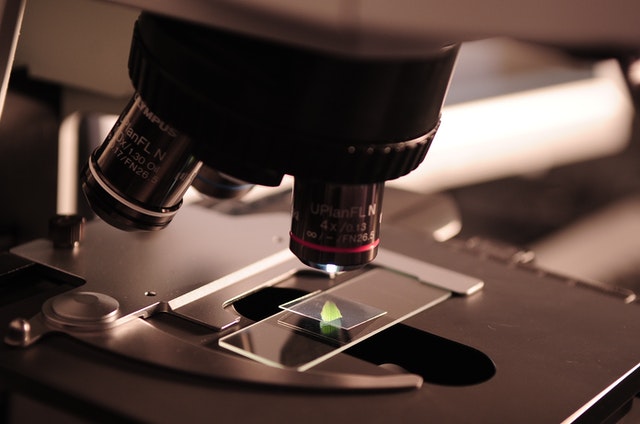
The good news is that the TEAS 7 Science section will remain mostly unchanged. It’s been whittled down in many more ways. A small change is that the number of questions has decreased from 54 to 53. There will be six questions that are unscored, leaving you with 47 questions to score. In addition, you will now have a 63-minute time limit.
Scientific Reasoning, Life and Physical Science, and Human Anatomy and Physiology are the three question categories that have been significantly reduced.
What precisely do these different question categories entail? We’ll go through this detailed information below for identifying category objectives, question structure, and strategies for approaching them successfully.
Scientific Reasoning
Scientific Reasoning is a category that looks at science at its most fundamental level. To put it another way, you won’t need to know much scientific information to answer these questions; rather, you’ll need to understand how science works. This will cover topics such as what constitutes a well-constructed scientific experiment, how to utilize equipment and locate quantitative data, make conclusions based on the facts provided to you, and how to determine what qualifies as successful experimental methods. This knowledge category on the Science subtest is the smallest, consisting of only seven questions.
Even if you think you know what you will complete this question category thanks to because of the subject matter, it’s still a good idea to brush up on the fundamentals of science. Most students learn this subject once throughout their high school years, even earlier, before continuing to more advanced subjects. You don’t want to go into the test thinking you’ve grasped basic scientific principles only to draw blanks on the details of the scientific process. Make sure you understand how the scientific method works, as well as the instruments you’ll need and how scientific data is usually presented.
Life and Physical Sciences
With eight questions, the Life and Physical Sciences category is just slightly longer than Scientific Reasoning. It covers a wide range of natural sciences, including chemistry, physics, and biology. As a result, you’ll be expected to demonstrate your understanding of how chemicals respond to various stimuli, the biological role of macromolecules, matter’s various forms and relationships, heredity and DNA, and their various properties, functions, and interactions, the differences between various types of matter, and the rudimentary anatomy of atoms.
Human Anatomy and Physiology
This is the longest question category, with 32 questions. The Human Anatomy and Physiology category, as the name suggests, focuses solely on the human body—its functions and appearance. You should be familiar with the following TEAS anatomy and physiology systems:
- Skeletal
- Respiratory
- Immune
- Cardiovascular
- Genitourinary
- Gastrointestinal
- Endocrine
- Neuromuscular
- Integumentary
- Reproductive
Furthermore, you should brush up on the fundamentals of human anatomy.
Read more >> Top TEAS Reading Tips 2025 You Must Grasp
How To Pass The ATI TEAS Science Section?
The content provided in the Science section of the ATI TEAS 6 is extremely complicated, as you can see from our descriptions of each question type. You’ll have to keep track of data from a variety of scientific areas, most of which are divided into more specific categories through the questions themselves. This can be daunting for some students during the study process, which is why we’d like to provide you with a TEAS test science study guide on how to make the study and testing process go more smoothly. The free TEAS Science Practice Test 2025 is also available on our website. Take these questions to familiarize yourself with the test format.
To begin with, you don’t need to study only one subject at once. Instead, you should be able to break each discipline down into smaller pieces and study one at a time. Because the TEAS is available all year, you can simply plan it so that you have enough time to prepare for the exam as much as you need before the test day. For example, you may divide each body system into its own study topic and spread them out day by day or week by week under the Human Anatomy and Physiology category. This will help you keep track of and absorb the material more effectively, and it is a much better choice than cramming everything in at once.
The difficulty of the Science test as a whole is a key feature. The solution to a question is rarely found on the surface. To find out the correct answer to questions, you’ll have to dive deep into your knowledge and studies. Some of the questions you’ll be asked will be on extremely specific topics.
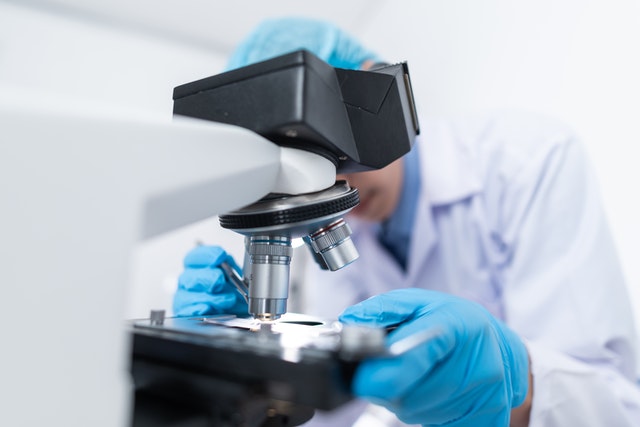
We also recommend that you read each section of the TEAS test carefully. This reduces careless mistakes by ensuring you have all of the information you need to work with.
We recommend that you should become as familiar with possible questions of the test as feasible before taking the test. This may be accomplished with the assistance of an ATI TEAS 6 Science practice exam, which you can obtain on our website. TEAS practice test will give you a better understanding of how the test works and allow you to practice taking it before the Test day. The practice test may then be used to fine-tune your speed and efficiency. Taking practice tests allows you to not only get used to the format and get a sense of what to expect but also allows you to identify your strengths and shortcomings. You can quickly identify which sorts of questions you answered incorrectly the most, allowing you to adjust your study strategy to focus more on knowledge gaps.
Whether you’re taking the practice test or the full-fledged TEAS, simplifying the questions as much as possible before answering them can help a lot. This is especially helpful for more complicated questions that may include a large amount of information at once. To get to the bottom of what they’re looking for, take notes in the margins of each question. You’ll be able to more readily digest the whole question and work toward the greatest answer if you simplify it and break it down into smaller pieces.
We hope you can use our resources to make an effective study strategy and then ace the ATI TEAS 6. We try to provide you with every conceivable study guide you’ll need to study hard and do well on any test on our website. We understand that taking the TEAS is the first step in enrolling in nursing school and pursuing your goal. This is why we’ve created this TEAS science study guide, as well as other materials. You also can access our free TEAS test study guide packs for other TEAS sections on our website. Now it’s time for practicing with our free TEAS Practice Test. Let’s start!
FAQs
Who takes the TEAS?
Students interested in nursing degrees can take the Test of Essential Academic Skills (TEAS). Many institutions in the United States need the TEAS as a prerequisite for their nursing programs, therefore students should research the institution’s eligibility criteria.
How many questions are on the TEAS Science exam?
The TEAS Science test consists of 50 questions. This part includes six “pretest” questions that are not factored into your overall score.
How long is the TEAS Science exam?
Test takers have 60 minutes to complete all 50 questions on the TEAS Science portion.
Can you use a calculator for the TEAS?
Yes. A four-function calculator will be handed out by a proctor at the start of the exam. Students are not permitted to utilize special-function calculators.
What is a passing TEAS Science score?
It is critical to learn about the minimum score criteria for the nursing program. There is no pass/fail score on the TEAS. You will be given a total or “main” score that combines your individual results from each of the four components (Science, Reading, Mathematics, and English & Language Arts). You will also be given individual scores for each segment. A program will usually demand you to get a score of at least 60% to 70%. However, because admittance to a nursing program is so competitive, students are urged to aspire higher than the program’s criteria.
Final Words
In conclusion, a TEAS science study guide is a valuable resource for preparing for the science section of the TEAS test. By using a well-designed study guide, students can gain a comprehensive understanding of the key concepts and topics that will be covered on the exam. A good TEAS science study guide will provide clear explanations, practice questions, and tips for approaching different types of science questions. It is important to dedicate sufficient time to study the guide thoroughly and review the material regularly. By utilizing a TEAS science study guide effectively, students can enhance their knowledge, improve their test-taking skills, and increase their chances of success in the TEAS science section.


